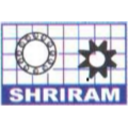The Importance of Wheat Cleaning
Wheat cleaning is the first and foremost step in the wheat processing chain. It involves removing foreign materials such as stones, sticks, leaves, and other grains that might have been harvested along with the wheat. The presence of such impurities not only compromises the quality of wheat but also poses significant risks to food safety. For instance, stones and other hard objects can cause damage to milling equipment, while non-wheat grains can introduce allergens, affecting the safety of the final food products.
Technologies in Wheat Cleaning
Modern wheat cleaning employs a variety of technologies, including:
- Vibratory Sieves: These remove particles by size, effectively separating wheat from larger and smaller impurities.
- Aspiration Channels: These use air flow to remove lighter impurities such as chaff and dust.
- De-stoners: Specifically designed to remove stones by density, ensuring that only wheat grains proceed to the next stage.
The Role of Wheat Grading
Grading follows the cleaning process and is equally vital. It involves categorizing wheat into different grades based on various quality parameters such as size, weight, color, moisture content, and protein level. Grading ensures that only wheat of the highest quality goes into the making of flour and other wheat-based products. It also standardizes wheat lots for trading, providing a common language for buyers and sellers regarding the quality of wheat being sold or purchased.
Grading Criteria
Wheat grading criteria may vary by region but generally include:
- Test Weight: A higher test weight indicates better quality and milling yield.
- Protein Content: Essential for determining the wheat’s end-use, with higher protein levels preferred for bread making.
- Moisture Content: Critical for storage, as high moisture can lead to spoilage.
- Foreign Material: The percentage of non-wheat materials present after cleaning.
Impact on Food Safety and Quality
The meticulous process of cleaning and grading wheat significantly impacts food safety and quality in several ways:
- Elimination of Contaminants: Cleaning removes physical contaminants that could pose health risks or damage processing equipment.
- Quality Consistency: Grading ensures that only wheat meeting specific quality standards enters the food supply chain, leading to consistent product quality.
- Prevention of Spoilage: By removing impurities and grading by moisture content, the processes help in preventing spoilage and extending the shelf life of wheat products.
- Regulatory Compliance: Cleaning and grading help producers meet strict regulatory standards for food safety and quality, avoiding recalls and ensuring consumer trust.
Best Practices in Wheat Cleaning and Grading
For optimal results, it's crucial to follow best practices in wheat cleaning and grading:
- Regular Maintenance of Equipment: To ensure efficiency and accuracy in cleaning and grading processes.
- Continuous Monitoring: Regular checks are essential to adjust settings and maintain the quality of output.
- Training for Operators: Skilled operators can significantly enhance the effectiveness of cleaning and grading operations.
Conclusion
Wheat cleaning and grading are indispensable steps in the production of wheat-based foods, ensuring that only the highest quality wheat reaches consumers. These processes not only safeguard food safety but also contribute to the overall value and consistency of wheat products. As technology advances, the efficiency and precision of cleaning and grading equipment continue to improve, promising even higher standards of food safety and quality in the future.
The integration of advanced technologies in wheat cleaning and grading underscores the agricultural sector's commitment to food safety and quality. By prioritizing these crucial steps, the wheat industry ensures that consumers enjoy safe, high-quality wheat products, reinforcing the foundation of global food security.

